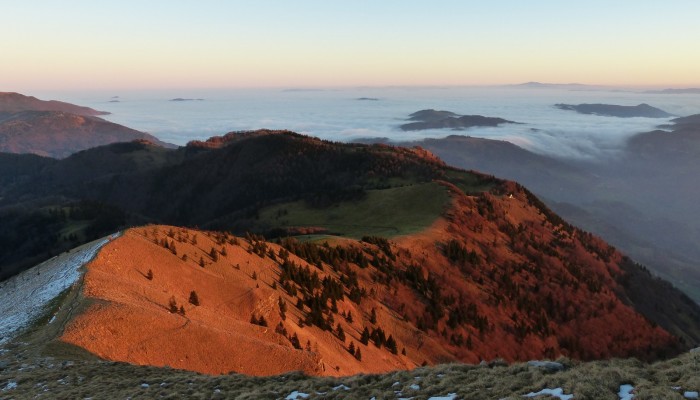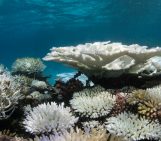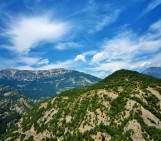
This week’s Imaggeo on Mondays image is brought to you by Cyril Mayaud, from the University of Graz (Austria), who writes about an impressive hike and layers of cold and warm air.
Thermal inversion is a meteorological phenomenon which occurs when a layer of cold air is trapped near the Earth’s surface by an overlying layer of warmer air. This can happen frequently at the boundary between mountainous and lowland regions such as in Slovenia and last for weeks, obscuring the sun from view to the people living below. When this phenomenon occurs over a large city, the consequence is that it can cause important pollution problems, as the lack of air circulation, prevents the rising and scattering of pollutants in the atmosphere.
The picture was taken at dusk from the top of the Porezen, a 1630 m high mountain located near the town of Cerkno and belonging to the Slovenian Prealps. This mountain is very popular among local hikers because its summit offers an impressive panorama of large parts of Slovenia, comprising the highest peaks of the Julian Alps, the Ljubljana Basin and even Snežnik Mountain located close to the Croatian border. A thick, low altitude, layer of clouds was covering the whole country during the preceding week, but clear, sunny skies prevailed above the clouds, a not too uncommon phenomena.. We made our way to the summit over several hours and spent some time enjoying the panorama and the sunset. As a result of the thermal inversion, the air temperature was warmer at the summit than in the surrounding lowlands. As soon as the sun began to set, the fog slowly started to move forward and cover the narrow valleys below the mountain. By the end of the day, the valley in the foreground was also totally engulfed by fog.
By Cyril Mayaud, Researcher at the University of Graz, Austria
Imaggeo is the EGU’s online open access geosciences image repository. All geoscientists (and others) can submit their photographs and videos to this repository and, since it is open access, these images can be used for free by scientists for their presentations or publications, by educators and the general public, and some images can even be used freely for commercial purposes. Photographers also retain full rights of use, as Imaggeo images are licensed and distributed by the EGU under a Creative Commons licence. Submit your photos at http://imaggeo.egu.eu/upload/




